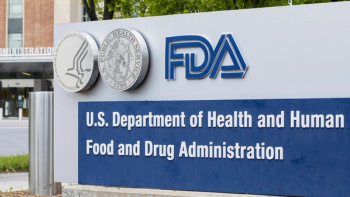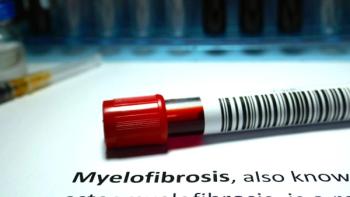Neoadjuvant (primary cancer treatment) Opdivo (nivolumab) plus Yervoy (ipilimumab) followed by therapeutic lymph node dissection (surgical removal of the lymph nodes) and response-driven adjuvant therapy (additional cancer treatment after the primary treatment to reduce the risk for the cancer to return) reduced the risk of progression, recurrence or death by 68% compared with therapeutic lymph node dissection and adjuvant Opdivo alone for patients with macroscopic stage 3 node-positive melanoma, study findings demonstrated.
Findings from the phase 3 NADINA study were presented at the 2024 ASCO Annual Meeting.
- The combination of neoadjuvant Opdivo (nivolumab) and Yervoy (ipilimumab) followed by response-driven adjuvant therapy significantly reduced the risk of progression, recurrence or death by 68% compared to therapeutic lymph node dissection and adjuvant Opdivo alone in patients with stage 3 node-positive melanoma.
- The NADINA phase 3 study demonstrated that 12-month event-free survival (EFS) was 83.7% for patients receiving the combination therapy, versus 57.2% for those receiving adjuvant therapy alone, with consistent benefits across various subgroups and a correlation between pathologic complete response and EFS.
- Subgroup analyses indicated improved EFS for both BRAF-mutant and BRAF wild-type melanoma patients with neoadjuvant Opdivo/Yervoy compared to adjuvant therapy alone, with significant pathologic complete response rates observed.
- The neoadjuvant combination therapy was associated with higher rates of severe side effects, but overall quality of life was similar to that of the adjuvant therapy group, highlighting the benefit of immunotherapy prior to surgery as a new standard of care for stage 3 melanoma.
At an analysis conducted after a median 9.9 months’ of follow-up, the estimated 12-month event-free survival (the time after primary treatment ends when a patient is free from the complications or events that treatment was meant to delay or prevent; EFS) rate with the neoadjuvant combination of Opdivo and Yervoy plus response-drive adjuvant therapy was 83.7% compared with 57.2% for adjuvant therapy alone. This benefit remained consistent across key subgroups, and a correlation was seen between pathologic complete response rates (the lack of the signs of cancer in tissue samples that are removed during surgery or after treatment) and EFS.
"This was at once the interim and the final analysis, because it was highly statistically significantly positive," lead investigator Dr. Christian U. Blank, Netherlands Cancer Institute (NKI-AVL), Amsterdam, Netherlands, said during a press briefing on the results. "I think NADINA defines now in melanoma that neoadjuvant immunotherapy is the new standard of care for macroscopic stage 3 melanoma. It is a new template for other malignancies implementing an immunotherapy regimen followed by response driven activities."
In the study, 423 patients were randomly assigned to the neoadjuvant arm (212 patients) or the standard-of-care adjuvant group (211 patients). Most patients in the study were male (65%), and ages were mixed between those over and under the age of 60. All patients had at least 1 PET-positive lymph node at diagnosis, with 19.6% having 2 to 3 nodes and 3.5% with more than 3 positive nodes. There were 11.3% of patients with metastases in transit (when cancer cells travel from the original tumor but may have gotten stuck in between the tumor and the lymph nodes).
For those with BRAF-mutant melanoma (which may lead to uncontrolled cell division and growth leading to cancer), the EFS rate was 83.5% with neoadjuvant Opdivo/ Yervoy compared with 52.1% for those treated with adjuvant therapy alone. In the BRAF wild-type group (when the BRAF gene is found in its natural, non-mutated state), the EFS with neoadjuvant Opdivo/Yervoy was 83.9% compared with 62.4% with adjuvant therapy alone.
By local assessment (the evaluation of a patient’s response to treatment by an oncologist directly involved in their care), the major pathologic response rate (how to measure how the disease has responded to treatment) with neoadjuvant Opdivo/Yervoy was 56.6% and by central review (independent of biopsies, scans, or other measurements typically performed during a trial), it was 59%. The pathological complete response rate (lack of all signs of cancer) was 45.8% by local assessment and 47.2% by central review. A minority of patients had a pathological partial response (decrease in tumor size or extent of cancer in the body) of 9.4% by local assessment and 8% by central review. For those with a pathological complete response, the probability of relapse-free survival (the time after treatment when a patient survives without symptoms or signs of that cancer; RFS) at 12 months was 95.4%. For those with a near-pathological complete response (minimal amount of cancer remaining), which was included in the major pathologic response criteria, the 12-month RFS rate was 94.1%. Those with a partial response had a 12-month RFS rate of 76.1%.
Subgroup analyses favored Opdivo and Yervoy across all subgroups.
"The study confirms and shows for the first time in a phase 3 study that giving immunotherapy before surgery results in superior outcomes to giving immunotherapy only after surgery," said ASCO commentator Dr. Michael Lowe, from Emory University in Atlanta. "The study also confirms that giving two immunotherapy drugs before surgery results in excellent responses."
The most observed grade 3 or higher (severe or worse) side effects in the neoadjuvant arm were infection, diarrhea, abnormal blood counts, rash, fever and fatigue. Overall, serious side effects were observed in 29.7% of patients in the neoadjuvant group compared with 14.7% in the standard therapy arm. There was one death in the adjuvant only arm related to pneumonitis (inflammation of the lungs). Surgery-related side effects were reported in 14.6% of patients in the neoadjuvant Opdivo/Yervoy arm and in 14.4% of the adjuvant group.
"The quality of life was equal for the neoadjuvant arm and for the adjuvant arm, despite the difference in grade 3 or 4 (severe or life-threatening) toxicities in these patients," said Blank. "The majority of toxicity or quality of life reduction for the patients comes from the surgery and not from the immunotherapy."
For more news on cancer updates, research and education, don’t forget to subscribe to CURE®’s newsletters here.






